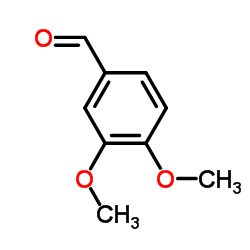Identification of phenolics for control of Aspergillus flavus using Saccharomyces cerevisiae in a model target-gene bioassay.
Jong H Kim, Bruce C Campbell, Noreen E Mahoney, Kathleen L Chan, Russell J Molyneux
Index: J. Agric. Food Chem. 52(26) , 7814-21, (2004)
Full Text: HTML
Abstract
The yeast Saccharomyces cerevisiae was used in a high-throughput bioassay to identify phenolic agents for control of the aflatoxigenic fungus Aspergillus flavus. Veratraldehyde, 1, cinnamic acid, 5, and the respective benzoic acid derivatives vanillin, 2, vanillic acid, 3, and vanillylacetone, 4, and cinnamic acid derivatives o-coumaric acid, 6, m-coumaric acid, 7, and p-coumaric acid, 8, showed significant antifungal activities (from highest to lowest, 2, 5 > 1 > 6, 7 > 4 > 3, 8) in the yeast system, with caffeic acid, 9, having little to no effect. Antifungal activity levels against A. flavus were similar. This similarity in antifungal activity demonstrated the usefulness of the S. cerevisiae bioassay for screening antifungal compounds. Assays using deletion mutants of yeast identified signal transduction and antioxidative stress response genes important to fungal tolerance. Targeting the antioxidative stress response system with certain compounds (e.g., 4) in combination with strobilurin fungicides had a synergistic effect against both fungi.
Related Compounds
| Structure | Name/CAS No. | Molecular Formula | Articles |
|---|---|---|---|
 |
veratraldehyde
CAS:120-14-9 |
C9H10O3 |
|
Sensitive naked eye detection of hydrogen sulfide and nitric...
2014-09-16 [Anal. Chem. 86(18) , 9335-42, (2014)] |
|
A chemical screening approach reveals that indole fluorescen...
2009-09-01 [Bioorg. Med. Chem. Lett. 19 , 4952-7, (2009)] |
|
Stopped-Flow Enantioselective HPLC-CD Analysis and TD-DFT St...
2015-12-01 [Chirality 27 , 914-8, (2015)] |
|
Characterization of the Saccharomyces cerevisiae YMR318C (AD...
2002-01-01 [Biochem. J. 361(Pt 1) , 163-72, (2002)] |
|
Antioxidant properties of 8.0.4'-neolignans.
2001-11-01 [Phytomedicine 8(6) , 454-9, (2001)] |